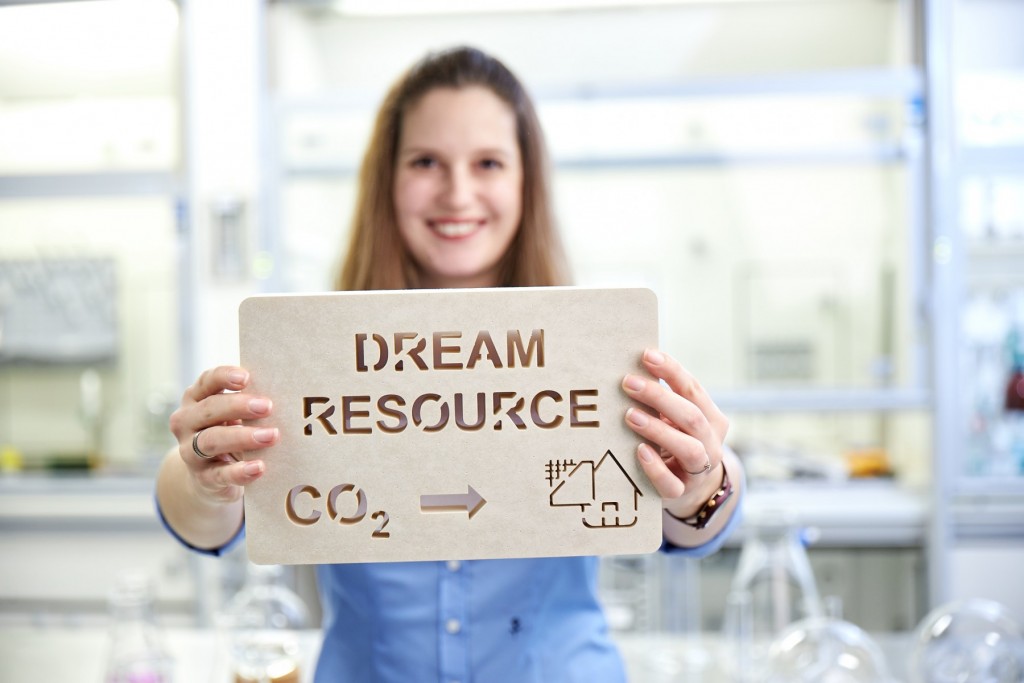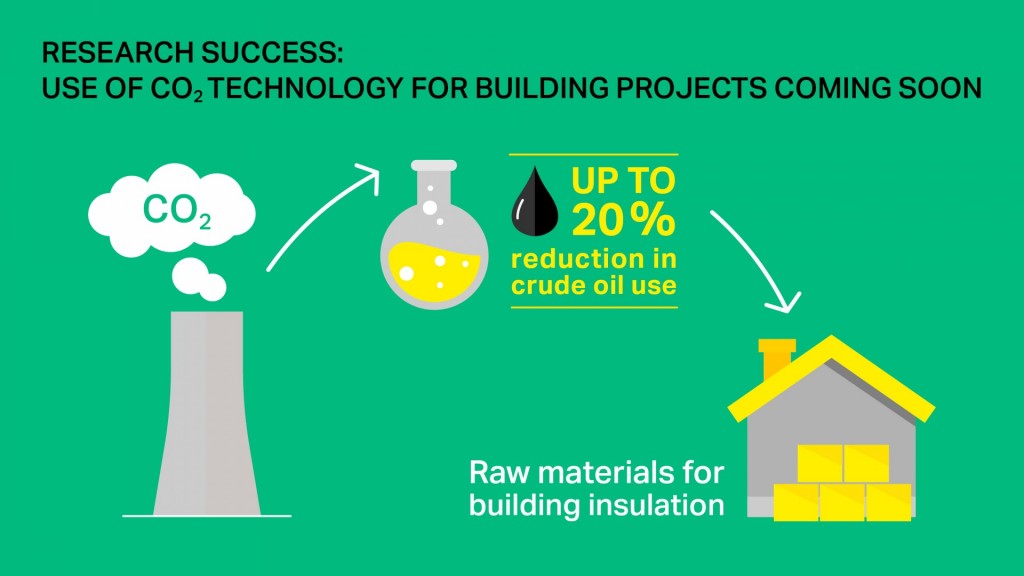Building with CO2 technology becomes possible
Successful research into rigid polyurethane foam with carbon dioxide
More sustainable, CO2-based materials for the construction sector – in the future, this could become reality. Since 2016, Covestro has been working with research and development partners as part of the “DreamResource” joint project (FKZ 033RC002) funded by the German Federal Ministry of Education and Research (BMBF) to research new, more environmentally friendly polyols with the potential to be used, for example, in the form of rigid polyurethane foam in insulation for the construction sector. An initial prototype of an insulation board has now been developed together with the project partner puren gmbh, which contains the novel polyols based on conventional ethylene oxides and CO2. This marks a decisive further development of Covestro’s CO technology for a particularly important part of the climate-relevant construction industry.
- Up to 20 percent CO2 instead of oil in rigid polyurethane foam
- Innovative rigid foam for insulation boards
- Materials show enhanced sustainability in initial tests
“Buildings are responsible for a large share of global energy consumption and greenhouse gas emissions. This makes it all the more important for us at Covestro to contribute to the Circular Economy and make insulation even more sustainable and efficient in the future. Our goal is to end the use of fossil fuels and make our production processes more sustainable,” says Sucheta Govil, Chief Commercial Officer at Covestro.
Using innovative CO2 technology, Covestro already produces the CO2-based precursor cardyon®, which is utilized in the manufacture of mattresses, sports flooring, textile fibers and components for vehicle interiors.
New, promising approach thanks to CO2 technology

Successful research project: Building with CO2 technology becomes possible
Covestro has now succeeded in combining the petroleum derivative ethylene oxide with CO2 in a chemical reaction to produce first polyols and finally rigid polyurethane foam. Up to 20 percent of petroleum-based raw materials are expected to be replaced by this process in the future. “With the development of these materials, we are endowing the greenhouse gas CO2 with a new use with versatile applications,” says Dr. Christoph Gürtler, Head of Catalysis and Technology at Covestro.
Together with Covestro’s industrial partners puren gmbh, BYK-Chemie GmbH and PSS Polymer Standard Service GmbH, it proved possible not only to investigate a wide range of applications but also to develop new analytical methods for the CO2-based materials. With RWTH Aachen University and the Technical University of Berlin, the ecological and economic potential of this expanded CO2 technology was investigated along with the in-depth characterization of the novel materials. “The results of DreamResource very clearly demonstrate the diverse opportunities that arise from the use of CO2 as a basic building block for polyols to produce a wide variety of polyurethane types. The interaction between industry and science plays an essential role in this innovative field,” says Dennis Krämer, project manager for national and international research projects for CO2 utilization at DECHEMA e.V.
Versatile and sustainable insulation

Less oil usage: research shows the way
“This renewed expansion of the product range yields enormous leeway,” continues Gürtler. Thanks to the promising combination of ethylene oxide and CO2, surface-active substances can also be produced through this new route in addition to CO2-based rigid polyurethane foam, which can be used in insulating boards for buildings, for example.
Lake Constance-based puren gmbh is one of the pioneers of rigid polyurethane foam technology and investigated the use of CO2 polyols in the rigid foam segment in this research project.
Following more than three years of joint research in the collaborative project, over 400 kilogram of the CO2-based polyol was successfully delivered to puren for further processing. “These initial rigid foam insulation boards made with a CO2-based rigid foam polyol conform to standards and are already comparable with the market standard in terms of their key technical specifications. During further cooperation, we plan to manufacture additional prototypes and to enhance the properties with the aim of taking a giant step closer to the use of CO2 as an alternative raw material in rigid foam insulation boards and ensuring rapid final development to market readiness,” says puren Managing Director Dr. Andreas Huther. Thanks to this successful collaboration, CO2 can now be used as an alternative raw material in the rigid foam sector. This will make building insulations even more sustainable and will further reduce the dependence on fossil raw materials.
Source: Covestro AG, press release, 2021-02-17.
